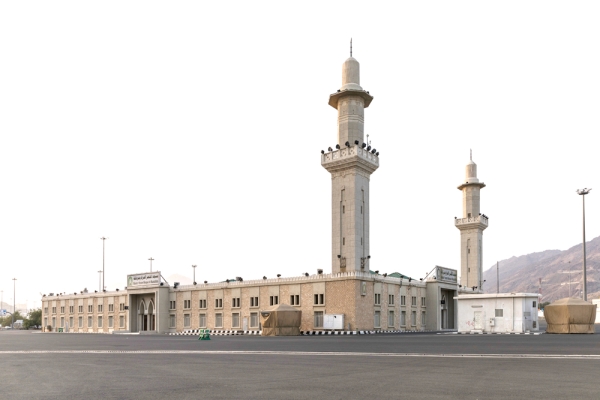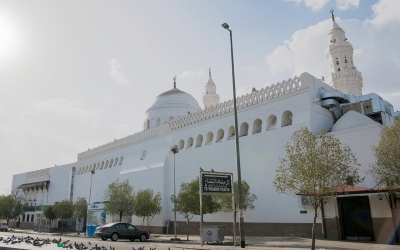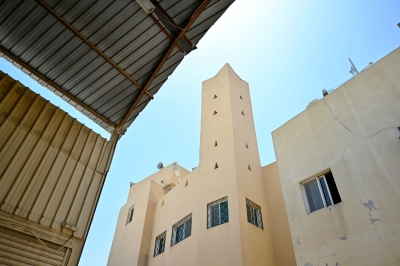
Al-Mash'ar al-Haram Mosque is one of the five mosques located in the holy sites in Makkah al-Mukarramah, in the Kingdom of Saudi Arabia, which include the mosques of al-Khayf, al-Bay'ah, Nimrah, and al-Sakhrat. It is located in the holy site of Muzdalifah, between Nimrah Mosque in Arafat and al-Khayf Mosque in Mina. The mosque opens its doors on the night of Eid al-Adha, the tenth of Dhu al-Hijjah, to welcome the pilgrims of the Grand Mosque of Allah for the Maghrib and Isha prayers, and for spending the night in Muzdalifah, after standing on the plain of Arafat.
The importance of al-Mash'ar al-Haram Mosque
Al-Mash'ar al-Haram Mosque is one of the most important mosques for Muslims, as its location is mentioned in the Holy Quran: "Then when you leave Arafat, remember Allah at al-Mash'ar al-Haram." Additionally, the Prophet Muhammad, peace be upon him (PBUH), prayed at its Qibla.
Naming of al-Mash'ar al-Haram Mosque
The mosque is named al-Mash'ar al-Haram due to its location in Muzdalifah, which is called "al-Mash'ar al-Haram" because it lies within the boundaries of the Grand Mosque.
Location of al-Mash'ar al-Haram Mosque
Al-Mash'ar al-Haram mosque is situated on a rectangular plot covering 5,040 m², with a length of ninety m from east to west and a width of fifty-six m from north to south. It has two minarets, each thirty-two m high, and entrances on all sides except the western side. The mosque can accommodate up to 12,000 worshippers. It is located at the beginning of Muzdalifah, along Road No. Five, which separates the hill from the mosque. Al-Mash'ar al-Haram is about five km away from al-Khayf Mosque, and seven km from Nimrah Mosque.
It is located approximately eleven km from the Grand Mosque and about 2.8 km from the nearest al-Mashaaer al-Mugaddassah Metro Line station. The mosque is distinguished by its Arab-Islamic architecture and numerous windows.
In the ninth century, al-Mash'ar al-Haram Mosque was square-shaped, small in size, and simple in construction, with no roof and six doors. Over the centuries, the mosque underwent several expansions, the largest of which took place during the era of the Saudi state.
The mosque offers several services for worshippers, particularly for pilgrims, with sixty-four restrooms available. Additionally, the General Directorate of Information Technology at the Ministry of Islamic Affairs, Dawah, and Guidance provides an "Electronic Fatwa Robot" service, offering religious rulings and consultations for the pilgrims.
Related quizzes
Related articles


